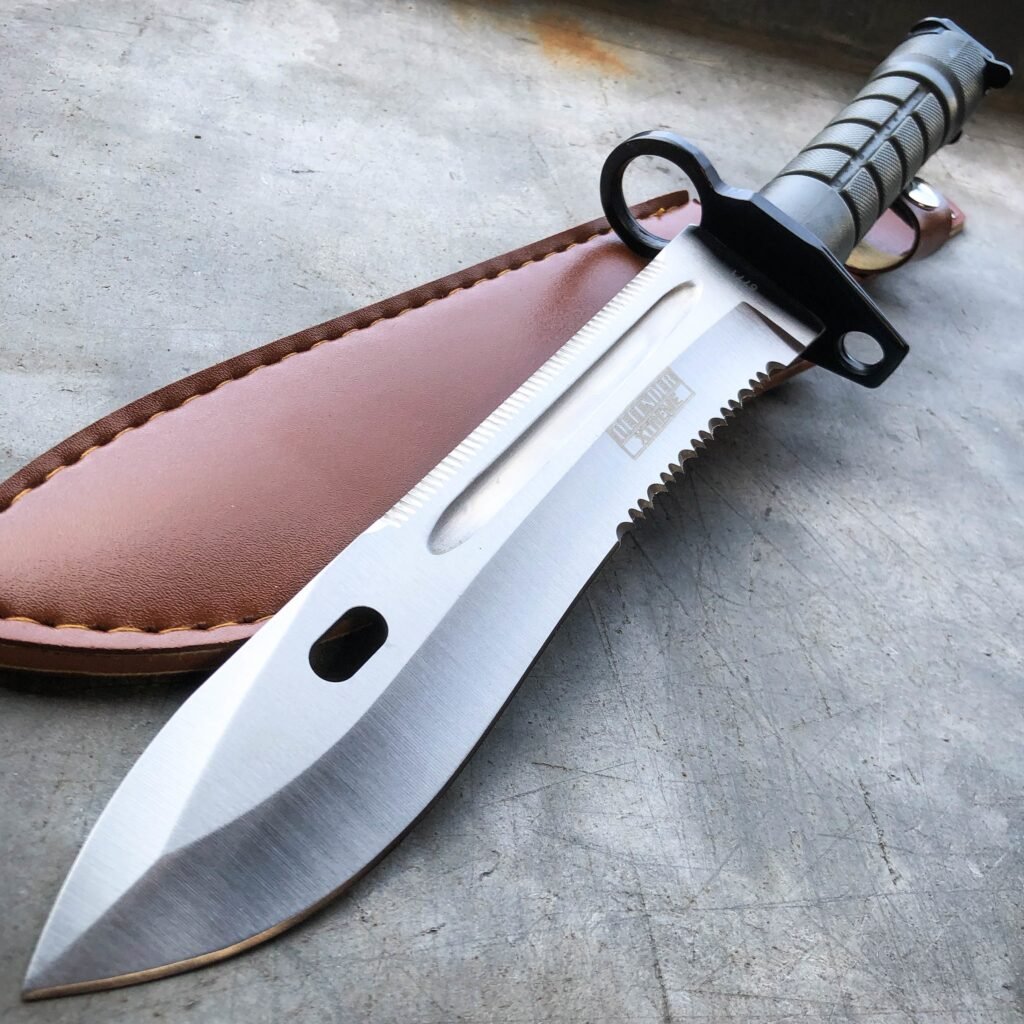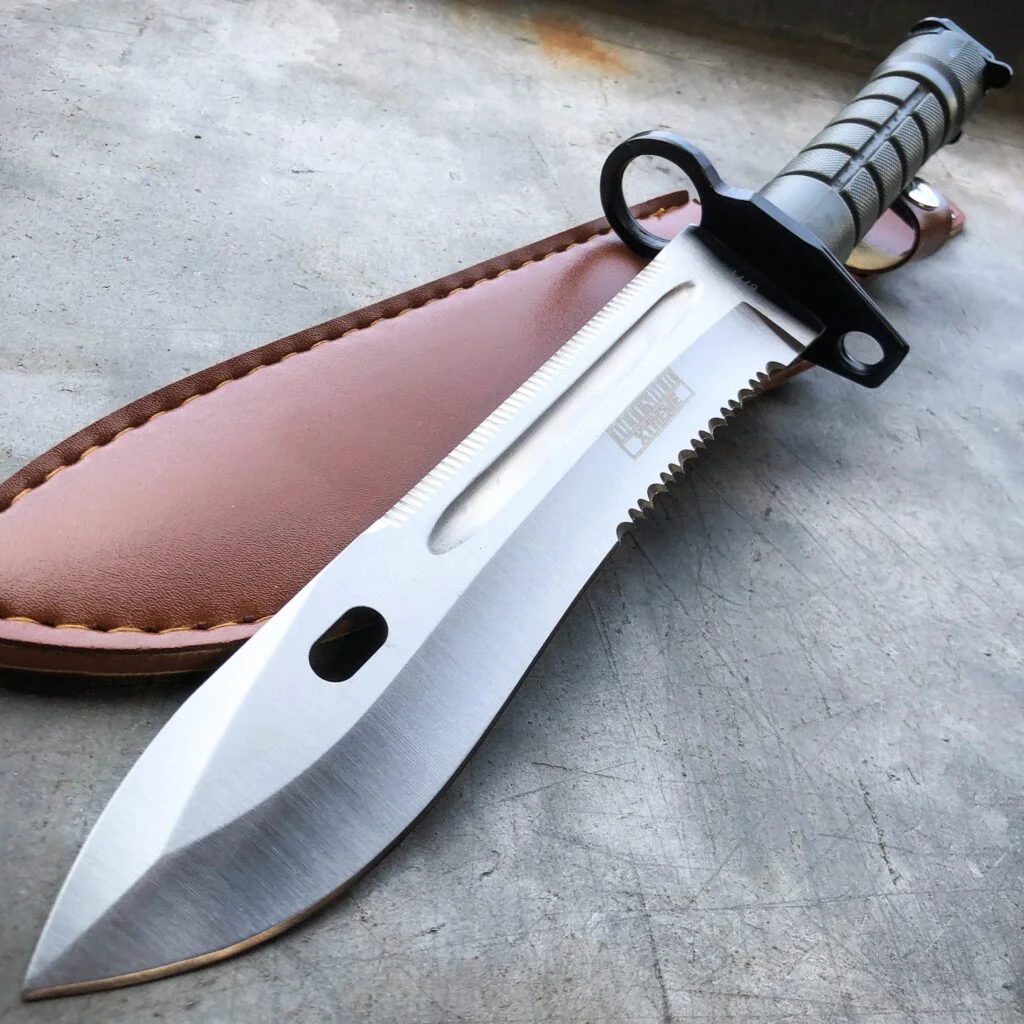A BRIEF HISTORY OF COMBAT KNIVES

The knife is probably the oldest human tool, or at least a version of a hand-cutting tool. But not only is it ancient, it has stood the test of time. For generations, people have used knives almost everywhere in life – from normal everyday situations to the most horrible and intense life. Although we initially consider knives to be tools, it cannot be denied that knives are associated with human conflict. As long as they are used as tools, they are already being used in some form in combat. The history of knives as weapons is long and complex. This is why we face this story as a complete guide to the post-war knives with humans. As you can imagine, all the blade tools can be traced back to the Paleolithic, and in that ancient time people came out of the caves and began to build their own structures, eventually leading to the development of civilization that manned Marked the first technological leap. Ahead. These tools are simple and unrefined, made mainly of stone or flint, and are used for jagged cuts and seals rather than complex slices. Over time, their shape changes from irregular stones to more recognizable arrow-shaped blades, although they are still much softer than the knives we will see later. Typically, these stone knives are wrapped in leather and sometimes adorned with fur on the handles, forming today’s familiar dagger shapes. However, various knives remain largely unchanged over hundreds of years. That is, until the end of the Stone Age.
BRONZE AGE:
The Bronze Age, named for the arrival of simple metal (which began sometime after around 3,000 BCE), turned almost entirely into knives. Stone is largely discarded as a blade material (with some exceptions) as metals such as copper and bronze are more effective and durable cutting tools. While this technique is still difficult to apply, the Bronze Age was the moment when knife making was transformed into art. The most famous metal blade visible at this time may be a copper dagger from the cup period. These knives have a flat structure, consisting of a flattened, beveled triangular copper triangular blade, an integrated tenon, and a pointed tip, wrapped with a rivet handle. Over time, the copper used in these cutting tools will be replaced with a more durable bronze, although their size remains largely unchanged. While these blades represent a great improvement over previously developed stone tools, they go a long way from the age to come.
IRON AGE:
It is interesting that the development of human civilization and the development of tools of war are closely related. Perhaps no place is more apparent than in the Iron Age. With the birth of steel, humanity entered the first true golden age – the era when civilization began to leap forward. It was also the era of the Roman Empire. As a proxy, it was one of the most violent historical periods during which the Romans were required to spread throughout Europe. At that time we saw a large number of recognizable blade shapes. In northern Europe, for example, archaeological excavations found an example of an Anglo-Saxon warrior’s blade, called a “sex” – a long dagger-style knife that was a close-range weapon and all-purpose tool in the Middle Ages. Was used as. Two more daggers appeared, called Rondels and Bollock – though their shapes were more like needles. At that time we saw many recognizable blade shapes. Apparently, it is used for stabbing and stabbing instead of cutting (this would be useful for multi-function blades). Perhaps the most important and most famous knife of this time was the Roman Pugio. Like its larger rival, Hapius (a short sword), it was a standard weapon used by Roman soldiers in close combat. As heirs to the Roman Empire, these blades were common like any other weapon, indeed the weapon of choice for conspirators who betrayed and murdered Julius Caesar. It is learned that the two main targets of this knife appear to be murder and suicide. Of course, war knives were not part of Western culture at the time, and many examples can be found in the East. One of the testers of time is Japan’s Tanto. These blades have a straight blade at the right angle at the tip of the blade and have a strong pattern of the Japanese long sword. Although often used in hand-to-hand combat, they are also widely used to perform sepuku – a ritual suicide intended to restore personal or family honor.
MODERN ERA:
Especially interesting for the modern era is that the industrialization of the world, coupled with the plight of two world wars, caused the future of knives to fight on two roads at the same time. First, the appearance of knives becomes more beautiful and aggressive because they can be more easily mass-produced without complex shapes or designs. With the development of modernization, the demand for blades becomes more and more practical. Second, they will take a major step towards the overall goal. As you will see, in the pre-industrial era war knives were commonly used solely as war weapons, whereas earlier war knives were also designed for many different purposes. This means that their form is used exclusively for war, nothing more than this. This is most evident in things like karambit and kukuri. However, with the development of modernization, the demand for buckets becomes more practical. The war knife is no longer a single-purpose combat tool, but it can be used in various ways and becomes a battle blade. Of course, they are still mainly used in combat, but they can easily assist soldiers in performing other tasks that may be necessary outside of combat, such as B. basic survival.
COMBAT KNIVES OF ONGOING ERA:
From World War II to the present day, the size of most combat knives has been somewhat standardized. In other words, most of them have similar shapes – the most distinctive being between the ancient dagger and the more modern Bowie knife. Of course, there is still much room for clarification, especially given the widespread increase in folding and fixed blades available to the public. However, when you look at some of the most influential modern combat knives, we can imagine their blade size, handle style and more similarities. Some of the most notable examples of modern combat knives are still being made in one form or another. For example, the United States Marine Corps (USMC) has been issuing one of its military US-bar USMC combat knives (also known as the 1219C2 Combat Knife or USMC Mark 2 Combat Knife) in some form since 1942. Similarly, Gerber Gear began offering versions of its Mark II Combat Knife in 1966 (inspired by Dick in Scotland). And this is just the beginning as various armed forces also work with the Ontario Knife Company, Al Mar and many others. Today, more and more brands that make knives are using some version of war knives – at least one that was inspired by previous combat knives.
Lets have a look at the best in class knife that we have:
Also give a read to our other blogs:


Comment (1)
Thx!